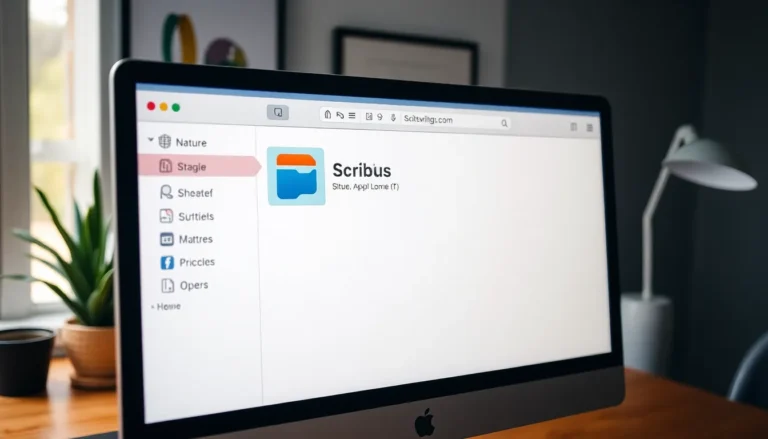In the fast-paced world of software development, crafting the perfect Request for Proposal (RFP) can feel like trying to find a needle in a haystack—blindfolded. But fear not! An effective RFP is your golden ticket to finding the right partner who can turn your tech dreams into reality. It’s not just paperwork; it’s the blueprint for a successful collaboration.
Imagine walking into a restaurant and ordering a mystery dish. Without a clear menu, you’re bound to end up with something you didn’t want. The same goes for software development. A well-structured RFP sets the stage for clarity, ensuring everyone’s on the same page. So, buckle up as we dive into the essentials of creating an RFP that’ll make developers sit up and take notice, all while keeping it light and engaging.
Table of Contents
ToggleUnderstanding Software Development RFP
A Request for Proposal (RFP) outlines project requirements for software development firms. It serves as a formal document inviting interested vendors to submit bids based on specific needs and criteria.
Definition of RFP
An RFP is a structured document that organizations use to solicit proposals from potential software development partners. It details project specifications, timelines, and expected deliverables. Clarity in an RFP allows vendors to fully understand project goals, ensuring comprehensive responses. Organizations can assess competencies, cost estimates, and timelines from various suppliers through this method. An effective RFP fosters competition among vendors, often leading to better pricing and innovative solutions.
Importance of RFP in Software Development
RFPs play a critical role in aligning expectations between clients and software development teams. They provide a framework for evaluating vendor capability and aligning project outcomes with business objectives. An RFP streamlines the selection process by offering transparency in costs and timelines. Furthermore, it helps identify potential risks early in the project lifecycle. Clear guidelines set within the RFP encourage high-quality proposals, driving better project results. By utilizing an RFP, organizations can ensure that the selected vendor is well-equipped to deliver on their specific requirements.
Components of a Software Development RFP

A comprehensive software development RFP includes several key components that clarify project expectations and vendor criteria. Each section plays a vital role in driving successful collaborations.
Project Overview
Project overview acts as the foundation of the RFP. It should succinctly describe the project’s purpose, goals, and scope. Contextualizing challenges faced by the organization helps vendors align their solutions with specific needs. Clearly stating target audiences or user demographics ensures developers understand who the end-users are. Defining project success metrics guides bidders to better envision potential outcomes. An effective overview sets the tone for the entire RFP and establishes shared objectives.
Technical Requirements
Technical requirements detail the essential features and functionalities of the software solution. Listing specific programming languages, frameworks, and technologies provides clear expectations for vendors. Articulating compatibility needs with existing systems aids in identifying suitable solutions. Including security standards ensures that development adheres to best practices and regulatory demands. Outlining integration capabilities with third-party applications fosters holistic project understanding. Each requirement empowers vendors to offer realistic bids that meet organizational standards.
Budget and Timeline
Budget and timeline specifications outline the financial constraints and expected completion dates for the project. Stating a budget range guides vendors in preparing competitive proposals without exceeding limits. Including expected project phases helps suppliers anticipate the timeline. Articulating deadlines for project milestones promotes accountability and transparency. Addressing payment structures ensures clarity on how funds will be allocated throughout the project. A well-defined budget and timeline create a framework for firms to meet organizational timelines efficiently.
Crafting an Effective Software Development RFP
Creating a standout RFP requires attention to detail and a clear understanding of project goals. Consider these insights on developing a strong proposal.
Best Practices for Writing an RFP
Start with a concise project overview, highlighting key objectives and challenges. Ensure clarity in technical requirements by listing specific features, programming languages, and compliance standards. Define the budget range to set realistic expectations for vendors. Include a detailed timeline that outlines critical milestones and deadlines to keep the project on track. Invite feedback on the RFP to refine and address gaps before distribution. Lastly, specify evaluation criteria, enabling vendors to tailor their proposals effectively.
Common Mistakes to Avoid
Avoid being vague in project descriptions, as this may lead to misinterpretations. Failing to define success metrics can complicate vendor assessments. Ignoring vendor qualifications results in proposals from less suitable candidates. Omitting examples of existing projects can leave vendors uncertain about expected standards. Neglecting to communicate the selection timeline creates confusion. Lastly, consider not including communication protocols, as this hinders effective collaboration throughout the RFP process.
Evaluating Responses to RFPs
Evaluating responses to RFPs effectively ensures organizations select the most suitable vendor. A clear assessment process maximizes project success and aligns expectations.
Criteria for Assessment
Several criteria guide the assessment of RFP responses. Consider technical expertise as it highlights a vendor’s capability to meet specific requirements. Evaluate project management experience to understand how past projects align with current needs. Pricing structures should also factor into the decision, as they reveal budget compatibility. Responsiveness to RFP queries indicates willingness to engage and support throughout the project. Analyzing proposed timelines ensures realistic delivery schedules that align with deadlines. Each criterion offers valuable insight into vendor suitability and project alignment.
Conducting Interviews with Vendors
Conducting interviews with vendors helps clarify proposal details and gauge compatibility. Prepare targeted questions to explore technical skills and methodologies further. Assessing cultural fit during interviews aids in building a strong partnership. Vendor responses reveal problem-solving approaches, which provides insight into their adaptability to challenges. Engaging in discussions about past projects uncovers relevant experience and success stories. By prioritizing open communication, organizations can establish trust and ensure alignment on project goals.
Crafting a well-structured software development RFP is essential for successful partnerships. It not only clarifies project requirements but also aligns expectations between clients and vendors. By focusing on key components and following best practices, organizations can attract the right developers and streamline the selection process.
The evaluation of vendor responses plays a crucial role in identifying the best fit for project goals. Engaging in open communication and conducting thorough assessments ensures that both parties are aligned and prepared for collaboration. Ultimately, a thoughtful RFP sets the foundation for a successful software development journey, driving better results and fostering long-term relationships.









